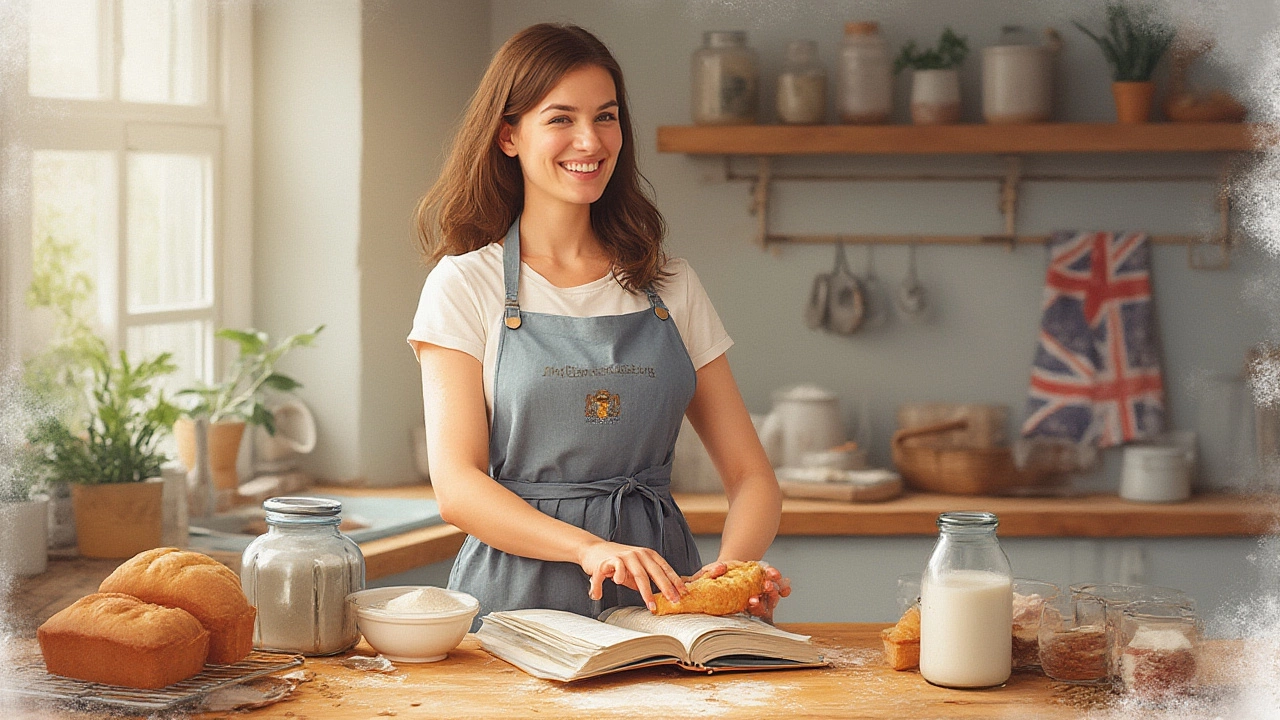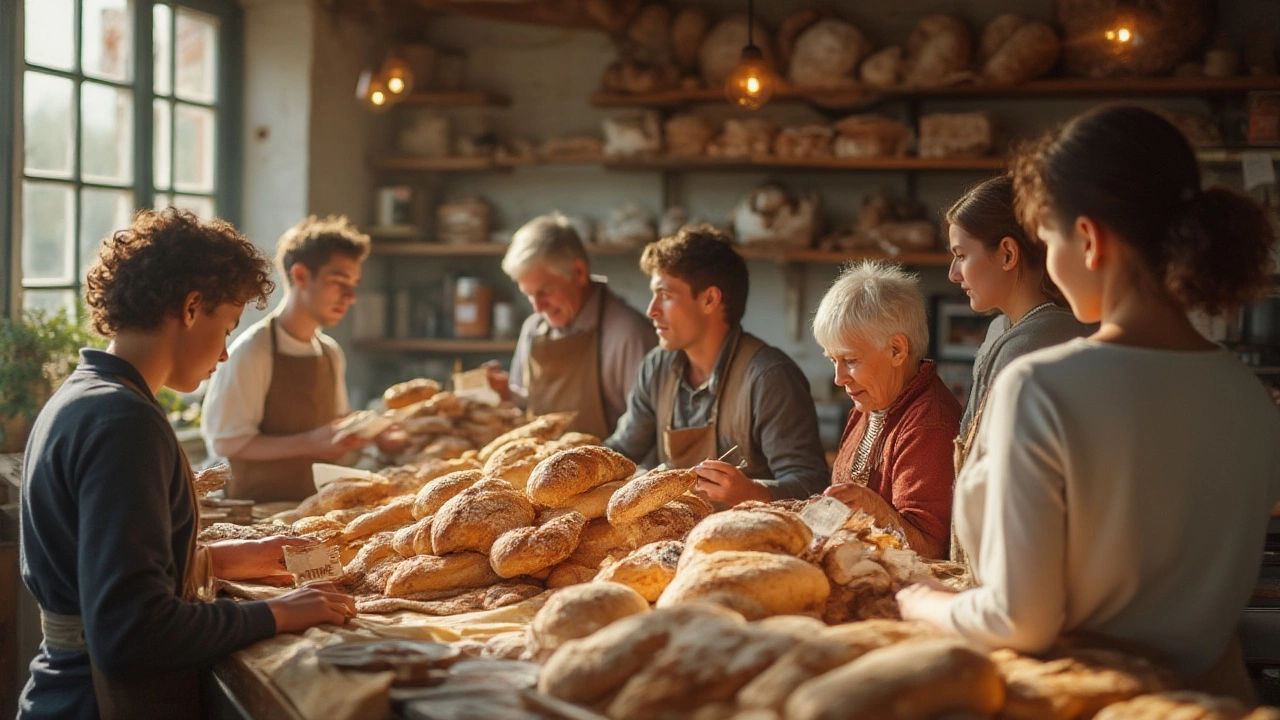Bread feels like one of those foods that should be naturally vegan, right? You mix flour, water, maybe some yeast or sourdough starter, and boom—loaf. Yet the truth is way trickier. Not every loaf sitting on grocery store shelves is plant-based, and sometimes the reasons aren’t super obvious. At my house, between Quentin smearing nut butter on his toast and Rufus drooling nearby hoping for crumbs, I’ve had to become a label detective just to keep our bread basket truly animal-free. If you’re curious about vegan bread, you’re not alone. Bread’s a staple, and cracking the code is totally worth it for you, your family, or even your four-legged scavenger. Prepare for a reality check, a little history, and some smart tips on bread shopping, because there’s plenty more to talk about than wheat and water.
What Makes Bread Vegan (or Not)?
The ingredient list on a basic bread should be pretty simple: flour, water, salt, and some kind of leavening. That’s pretty much all our ancient ancestors had. The trouble starts when commercial bakers get creative—or sneaky, depending on how generous you’re feeling. The classic French baguette keeps it honest, using just four ingredients (flour, water, salt, and yeast) and is almost always vegan friendly. But many American sandwich loaves, breads from bakeries, and fancier artisanal loaves often sneak in animal-derived ingredients that you’d never expect. Did you know that some country-style breads are glazed with milk or egg wash so they look shiny? Or that honey can replace sugar for sweetness, and whey (a milk protein) can sneak in for added softness? Look out for less-familiar words: L-cysteine (sometimes sourced from duck feathers!), mono- and diglycerides (could be animal or plant-based), or casein (dairy) might show up on nutritional labels.
Here’s a quick table to help you spot the usual suspects (and their vegan alternatives):
| Animal Ingredient | Why It’s Used | Vegan Alternative |
|---|---|---|
| Milk | Softness, flavor | Soy, oat, or almond milk |
| Butter | Moisture, richness | Vegan butter or oil |
| Eggs | Texture, rise, color | Flax eggs, aquafaba |
| Honey | Sweetener | Maple syrup, agave |
| Whey/casein | Added protein/softness | Wheat or soy protein |
| L-cysteine | Dough conditioner | Vegetarian-sourced L-cysteine or omit |
Why all these animal products? It’s all about shelf life, texture, flavor, and convenience. Large-scale bakers smooth out costs and improve consistency by adding these things—but folks on a vegan diet definitely need to double-check every loaf. Sometimes even “healthy” or “whole grain” varieties could slip in honey for sweetness, so never assume.
Types of Bread That Are Usually Vegan
Alright, now for the good news—plenty of bread is naturally vegan, especially if you know where to look. Traditional European peasant-style breads (your sourdough, rustic rye, classic baguette) are almost always safe. They’re made for simplicity and rely on the magic of fermentation rather than dairy or eggs. Sourdough is especially popular because its tangy kick is flavor-packed without animal help. A lot of bakery-made Italian bread and ciabatta also keep it basic: flour, water, salt, and yeast. If you spot a fresh ciabatta at your supermarket’s bakery, grab it! (Just make sure it’s not brushed with butter before baking.)
Pita bread, lavish, and some tortillas (wheat or corn) are another win for vegans. Just keep in mind, some brands (especially mass-produced flour tortillas) will use lard or whey, so a quick scan of the ingredients is always smart. Love chapati, roti, poppadoms, or injera? These flatbreads from India and Ethiopia are often made using just flour and water, baked or griddled into chewy deliciousness. No sneaky eggs necessary (as long as you don’t dip them in buttery sauces).
For sandwich bread, you’re probably best off with the simplest brands or bakery “peasant” loaves. Ezekiel bread and most sprouted grain breads found in health food stores are usually a safe bet. They’re all about letting grains shine, so animal products rarely show up. Here are some examples you’re likely to spot at the store that are usually vegan:
- Dave’s Killer Bread (most varieties—but check for honey in a few)
- Alvarado Street Bakery (all vegan, organic, sprouted)
- Ezekiel 4:9 bread (bean and grain blend, super healthy)
- Pepperidge Farm Farmhouse Hearty White (no milk or eggs)
- Most classic baguettes, ciabatta, and sourdough from in-house bakeries

Breads That Aren't Vegan (and Why)
Now for the disappointing stuff. Some breads are almost never vegan. If you’re a croissant lover (I mean, who isn’t?), traditional French versions use loads of butter. Same story with brioche; eggs and butter give it that heavenly pillowy texture. Naan, that buttery, fluffy bread you get alongside tikka masala, usually has yogurt, milk, and sometimes eggs. Hawaiian rolls, potato bread, challah, and babka also almost always have eggs or dairy. Raisin bread might seem safe, but manufacturers often toss in whey or casein for softness. Some gluten-free breads, oddly enough, fill in the “missing” wheat structure with eggs.
Bagels can be a wild card. The traditional New York style is usually vegan (just water, flour, yeast, maybe a little malt syrup for sugar). But once you get into the world of supermarket brands, watch for honey, L-cysteine, and even powdered milk. Same caution applies to English muffins; some are vegan-friendly, some sneak in milk or enzymes. Have you ever noticed “enzymes” on a label? It could mean anything—plant, animal, or microbial. It’s rare, but sometimes animal-derived enzymes are used in processing flour, especially in the U.S.
Ready for a curveball? Some bread crumbs and croutons have cheese powder, egg, or even a little beef broth. Did your jaw just drop? You’re not alone. My dog Rufus probably wouldn’t care, but my taste buds (and conscience) sure do.
If you’re shocked, here’s a quick list to watch out for:
- Croissants
- Brioche
- Challah
- Naan (unless labeled vegan—easy to spot at modern places)
- Hawaiian rolls
- Potato bread
- Babka
- White sandwich bread with “milk solids,” “whey,” or “casein”
- Bread crumbs with “cheese,” “eggs,” or “beef flavoring”
- Gluten-free breads with “egg whites” or “whole eggs”
Shopping, Baking, and Label Tips for Vegan Bread
Before you panic and toss half your pantry, let’s talk tools for surviving in this world of mysterious labels. Shopping for vegan bread isn’t as hard as it was a decade ago. These days, lots of brands go out of their way to mark their bread “vegan” right on the label. Some bread is even certified—look for an official vegan symbol or “plant-based” stamp. When in doubt, the fewer the ingredients, the safer you are.
Here’s a quick mental checklist when you’re reading the bread label:
- Avoid: milk, cream, butter, eggs, casein, whey, honey, L-cysteine, mono- and diglycerides (unless specified vegan), natural flavors (occasionally animal-based), and enzymes.
- Look for: flour, water, salt, yeast, sourdough starter, plant oil (sunflower, olive, canola), simple grains or seeds.
- When in doubt? Pull out your phone and Google those hard-to-pronounce ingredients.
Baking your own vegan bread is actually easier than you might think. Basic no-knead recipes need nothing more than flour, yeast, salt, and water. Add a little maple syrup for sweetness if you want. Into gadgets? Automatic bread machines usually have a “basic” setting that results in a lovely vegan loaf, if you follow a dairy-and-egg-free recipe. There are tons of plant-based baking blogs (and Reddit threads) to inspire you. Swap cow’s milk for oat or soy: it won’t change the flavor much, and gives a soft crumb. For extra lift in denser recipes, use a “flax egg” (one tablespoon ground flaxseed and three tablespoons water, set for ten minutes). works for dinner rolls, burger buns, you name it.
Fun fact—the rise in vegan-friendly bread means you’ll spot stuff on store shelves labeled “plant-based,” even in mainstream groceries now. The baking industry cites a steady demand: by July 2025, about 12% of new bread launches in the U.S. are labeled as vegan or plant-based. It’s not just a trend—more people care about labels, ethics, and clean eating. At our house, that means even Rufus gets to snack on crusts without side-eye.
Need to impress at the next family gathering? Consider tossing together a simple focaccia with olive oil and rosemary. Nobody will ever ask if it’s vegan—they’ll just ask for seconds.

